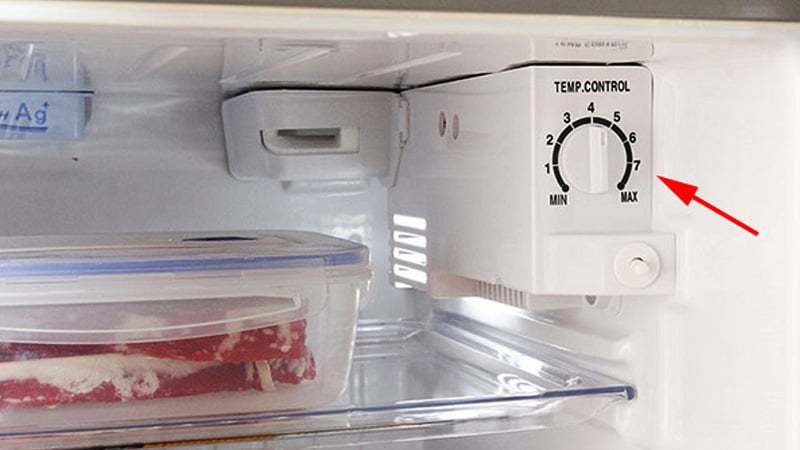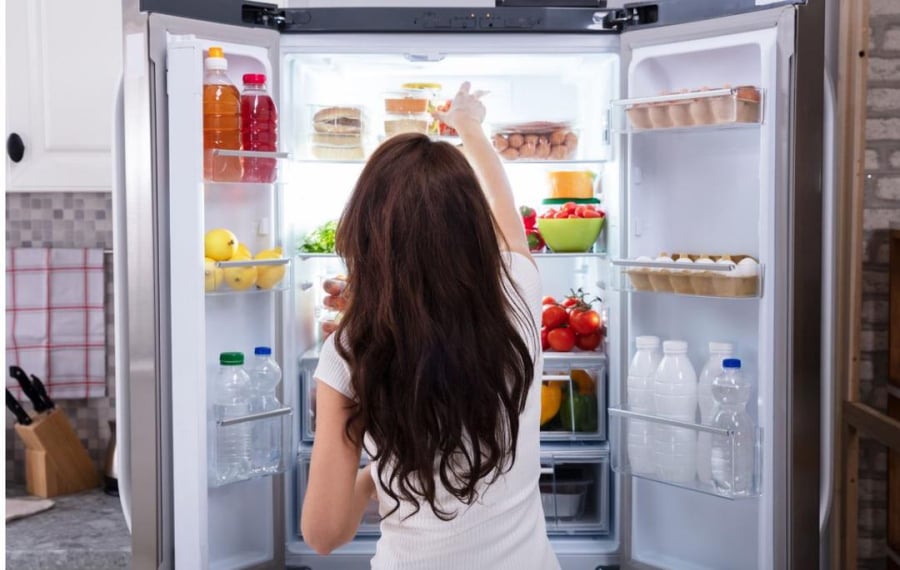Refrigerators are an essential appliance in most households nowadays. They operate continuously 24/7, during both the summer and winter seasons, helping to keep the family’s food fresh for longer. However, due to their constant operation, refrigerators are also known to be one of the most energy-consuming devices in the house. Few people are aware that there is a small button inside the refrigerator that users can adjust in the winter to save some “significant” electricity costs.
How should refrigerator temperatures be adjusted in the winter to save electricity?
Statistics from the Vietnam Electricity Corporation (EVN) in May showed that a large refrigerator consumes an average of 50 – 75 KWh of electricity per month, ranking third among household appliances, after electric stoves and water heaters.
In reality, this figure is only an average. During the usage process, there are habits of users that can contribute to saving some energy that the refrigerator consumes. This can be easily done in the winter with just one simple action involving the two compartments – the freezer and the refrigerator compartments. However, not many users actually know and pay attention to this action. It is the act of adjusting the temperature through the knobs or control panel of the refrigerator. With just one small adjustment to the refrigerator in the winter, the electricity bill of the family can be saved to some extent.

Refrigeration technicians recommend that during the winter, to save energy, users can consider adjusting the temperature of the refrigerator to a lower cooling level. Specifically, in modern refrigerators today, the internal temperature level is usually regulated on a scale of 1-5 or 1-6. In the summer, the temperature level can be set to the maximum or near the maximum. However, in the winter, adjusting the temperature to levels 2-3, or even 1, is completely feasible. At level 1, the temperature inside the refrigerator usually ranges from 2-5 degrees Celsius. This is an appropriate temperature level for the refrigerator to operate well, fulfill its storage function, and also save energy. This adjustment can also be applied similarly to the freezer compartment of the refrigerator.
In addition to adjusting the temperature level of the refrigerator in the winter, users can also balance this action based on the amount of food being stored in the refrigerator, according to the weather. For example, when the refrigerator does not contain too many items, the cooling levels can be set low.
Conversely, when the refrigerator is storing a large amount of food, it is necessary to increase the cooling levels. Especially when the freezer compartment is storing a lot of fresh food such as seafood, it is best to maintain a high cooling level of around -18 degrees Celsius. This temperature level will prevent the maximum development of bacteria, ensuring that the food is preserved for a longer time and safer.
Some tips to help save electricity with the refrigerator
In addition to adjusting the refrigerator temperature during the winter, experts also provide additional advice on usage habits that can help save more electricity consumption.
+ Proper placement of the refrigerator
Refrigerators usually release heat at the back or two side panels. When the heat dissipation process is affected and delayed compared to normal conditions, it inadvertently increases the power consumption of the device. Therefore, depending on the heat dissipation position of the device, users should place the refrigerator not too close to the wall or other obstacles.
It is also not advisable to place the refrigerator near other electronic devices such as microwaves, electric stoves, or ovens because two heat-generating devices close to each other will significantly increase the temperature of the space, causing the lifespan of these devices to decrease.

+ Limiting prolonged opening of the refrigerator door
Keeping the refrigerator door open for a long time will cause the cold air inside the device to escape. This means that the compressor will need to work more to generate cold air, ensure the cooling of the food inside the device, and thus consume more electricity.
+ Storing food in glass or porcelain containers
Experts recommend that users consider using glass and porcelain containers as they have better absorption and retention of cold air. Arranging these containers properly, not too many, and stacking them in the refrigerator will help promote even circulation of cold air and save a significant amount of electricity consumed by the refrigerator.
+ Regularly checking and cleaning the refrigerator
A seemingly simple but essential habit, which helps save energy when using a refrigerator, is to maintain the habit of regularly checking and cleaning the refrigerator. In particular, cleaning should be performed every 1 to 3 months to limit the accumulation of long-term dust in the air supply vents, which can cause the compressor to work harder to provide enough temperature to the refrigerator, resulting in more energy consumption.
Preparing Yellow Apricot Flowers to be in Full Bloom for Tet Celebration
As the Lunar New Year quickly approaches, many families are looking for guidance when it comes to selecting, purchasing, maintaining, and decorating with beautiful golden apricots. To ensure you get the most out of this lovely tradition, this article will provide you with specific instructions for choosing, caring for and decorating with yellow apricot blossoms. Learn how to make the most of this iconic symbol of the Tet holiday season!



































